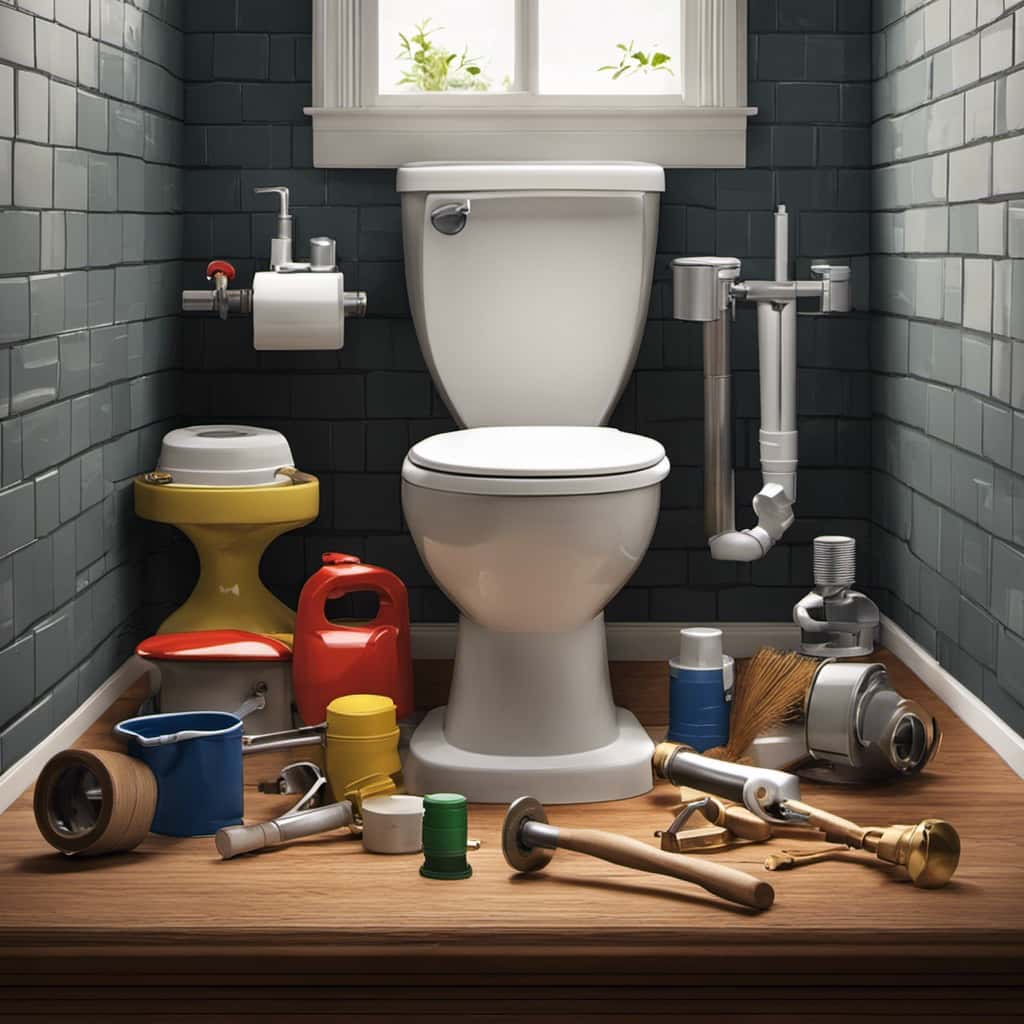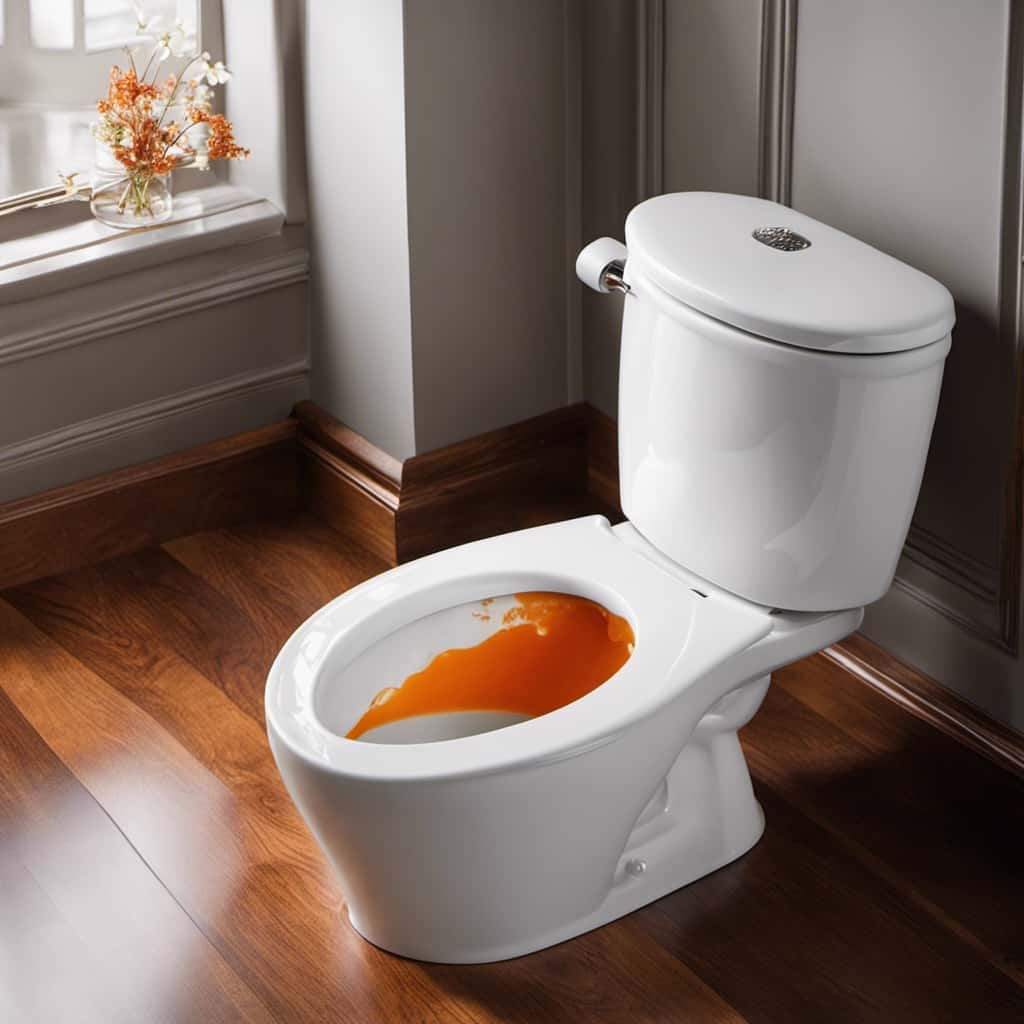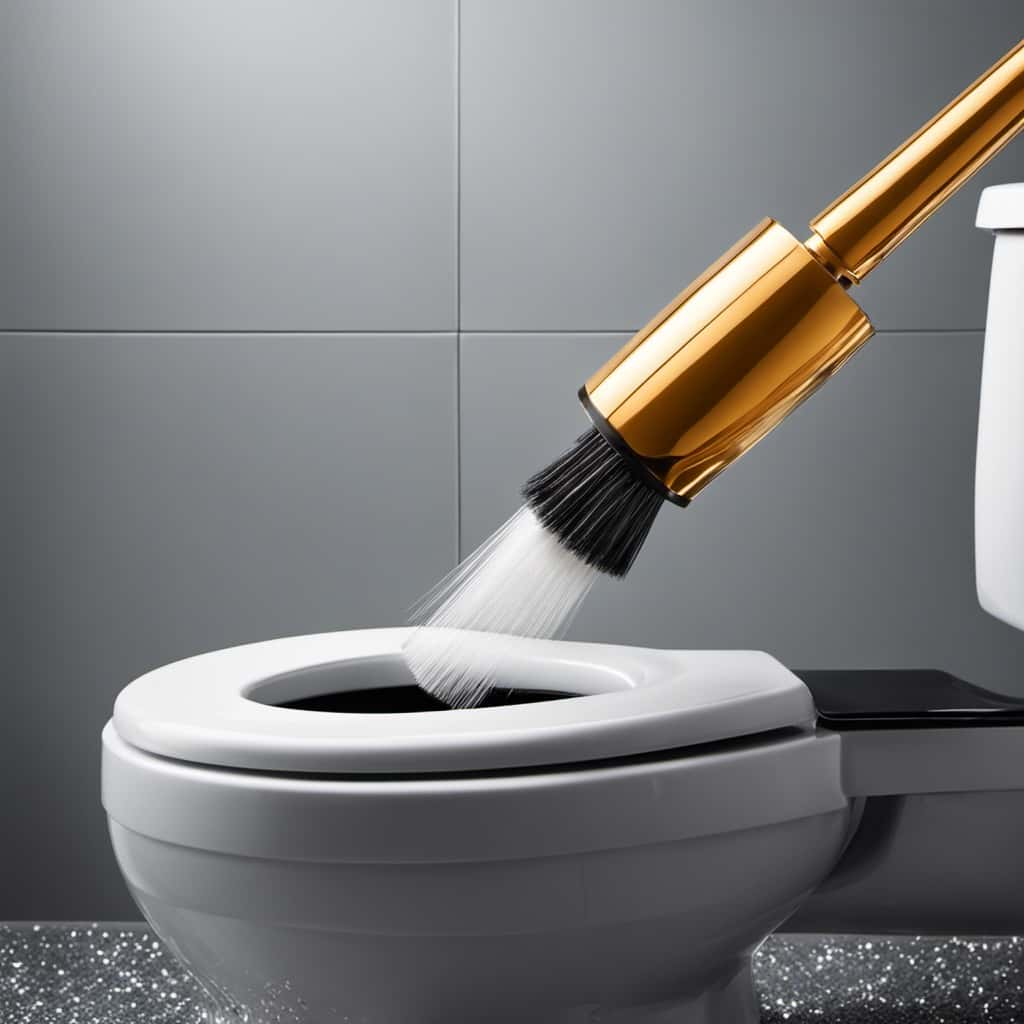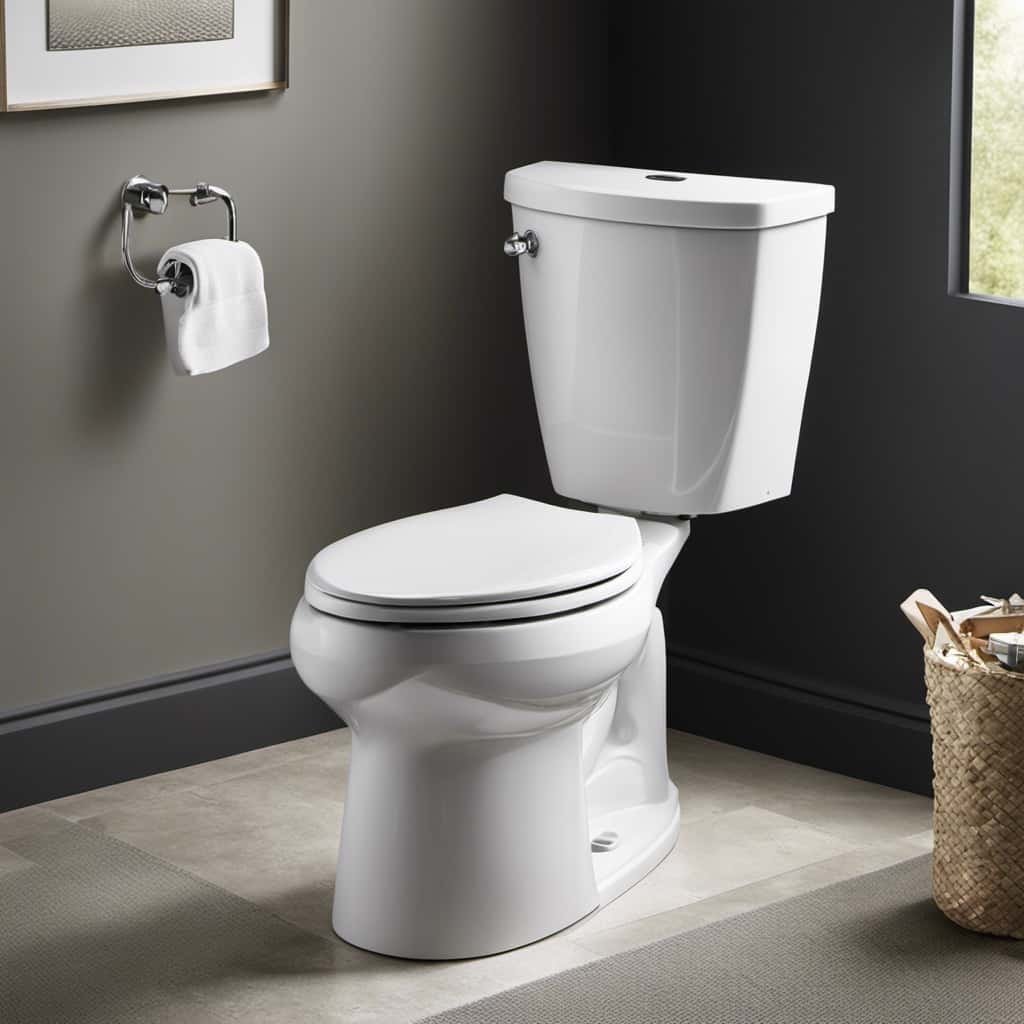So, you’re having trouble with your toilet? Well, fear not, because we’ve got you covered.
In this article, we’ll walk you through what to do if your toilet won’t flush all the way. We’ll share some expert tips and tricks to help you tackle this pesky problem head-on.
From checking the water level to clearing clogs and adjusting valves, we’ve got all the know-how you need.
Get ready to become a master of toilet troubleshooting!

Key Takeaways
- Check and adjust the water level to ensure it is about an inch below the top of the overflow tube.
- Use a plunger or toilet auger to clear clogs or blockages in the toilet drain.
- Inspect and adjust the flapper or flush valve to ensure proper flushing.
- Inspect the fill valve and float for damage or wear, and clean any debris that may affect their performance.
Check the Water Level
To check the water level, we need to lift the toilet tank lid and observe the amount of water present. This step is important because an incorrect water level can cause your toilet to not flush properly.
When inspecting the toilet tank, make sure the water level is about an inch below the top of the overflow tube. If the water level is too low, you can adjust it by turning the float adjustment screw clockwise to raise the water level. On the other hand, if the water level is too high, you can adjust it by turning the screw counterclockwise to lower the water level.
Additionally, don’t forget to check the flush handle for any issues and ensure it’s functioning properly.
Clear Any Clogs or Blockages
Now let’s move on to clearing any clogs or blockages that may be causing your toilet to not flush properly. When it comes to toilet maintenance tips, dealing with clogs is a common issue that many homeowners face.

If you’re experiencing difficulties with your toilet flushing, it’s likely due to a clog or blockage in the pipes. The first step is to use a plunger to try and dislodge the clog. Make sure to create a tight seal around the drain and use a firm, upward motion to create pressure.
If the plunger doesn’t work, you can try using a toilet auger or snake to break up the clog. Insert the auger into the drain and turn the handle clockwise to break up the blockage.
If these methods don’t solve the problem, it may be necessary to call a professional plumber to assist you. With these tips, you’ll be well-equipped to tackle common toilet flushing problems.
Now, let’s move on to the next section about adjusting the flapper or flush valve.

Adjust the Flapper or Flush Valve
After clearing any clogs or blockages, the next step is to adjust the flapper or flush valve to ensure proper flushing of your toilet.
The flapper is a rubber seal that covers the flush valve, which prevents water from flowing into the toilet bowl until you flush. Over time, the flapper can become worn or misaligned, causing incomplete flushes.
To adjust the flapper, you can try bending the metal or plastic arm that connects it to the flush handle. If that doesn’t work, you may need to replace the flapper entirely. This is a relatively simple task that you can do yourself with a few basic tools.
However, if you’re not comfortable with DIY repairs, it’s always a good idea to hire a plumber to ensure the job is done correctly.

Inspect the Fill Valve and Float
Continuing with our troubleshooting process, we’ll now inspect the fill valve and float to ensure proper functioning of your toilet. This step is crucial in determining the cause of the incomplete flushing.
Here are some key points to consider:
- Check for any signs of damage or wear on the fill valve and float. If either of these components is damaged, it may affect the water level and hinder the flushing process.
- Ensure that the float is properly adjusted. If it’s set too low, the tank may not fill up adequately, resulting in a weak flush.
- Clean any debris or mineral build-up that may be affecting the fill valve’s performance. A clogged fill valve can restrict water flow and impact the flushing power.
- If the fill valve and float appear to be in good condition and properly adjusted, but the problem persists, it may be necessary to replace the toilet or call a plumber for further inspection.
Consider Using a Plunger or Toilet Auger
We can try using a plunger or a toilet auger to address the issue of a toilet that won’t flush all the way. These unclogging methods are effective in resolving common toilet issues. Let’s take a look at the table below for a quick comparison between the two options:
| Plunger | Toilet Auger |
|---|---|
| Creates suction to dislodge clogs | Rotates and pushes through clogs |
| Works best for minor clogs | Effective for more stubborn clogs |
| Requires water in the bowl to create seal | Doesn’t require water in the bowl |
| Easy to use and readily available | May require some skill and additional purchase |
| Can be used for multiple purposes | Specifically designed for toilet clogs |
Frequently Asked Questions
How Often Should I Check the Water Level in My Toilet?
We check the water level in our toilet regularly to ensure it’s functioning properly. It’s important to know how often to replace the toilet tank and how to adjust the water level for optimal performance.

Can I Use Chemicals to Clear a Clog or Blockage in My Toilet?
Using chemicals to clear a toilet blockage can be effective, but there are alternative methods that may be safer and more environmentally friendly. Consider using a plunger or a toilet auger before resorting to chemicals.
How Do I Know if the Flapper or Flush Valve Needs Adjustment?
If the toilet won’t flush all the way, we should check if the flapper or flush valve needs adjustment. A flapper replacement might be necessary, or a flush valve repair could solve the issue.
What Should I Do if the Fill Valve and Float Are Not Functioning Properly?
If the fill valve and float are not functioning properly, we may need to troubleshoot the float issues or consider a fill valve replacement. These steps can help ensure a fully functioning toilet.
Are There Any Other Tools I Can Use to Unclog My Toilet Besides a Plunger or Toilet Auger?
When the toilet refuses to fully flush, we need to explore DIY alternatives to the trusty plunger. Let’s discover other tools and methods that can save us from this common household dilemma.

Conclusion
In conclusion, if your toilet won’t flush all the way, there are several steps you can take to fix the issue.
- Check the water level.
- Clear any clogs or blockages.
- Adjust the flapper or flush valve.
- Inspect the fill valve and float.
If these steps don’t work, consider using a plunger or toilet auger.
Remember, maintaining a properly functioning toilet is essential for a clean and comfortable bathroom experience.
So, why wait? Take action and solve the problem today.











